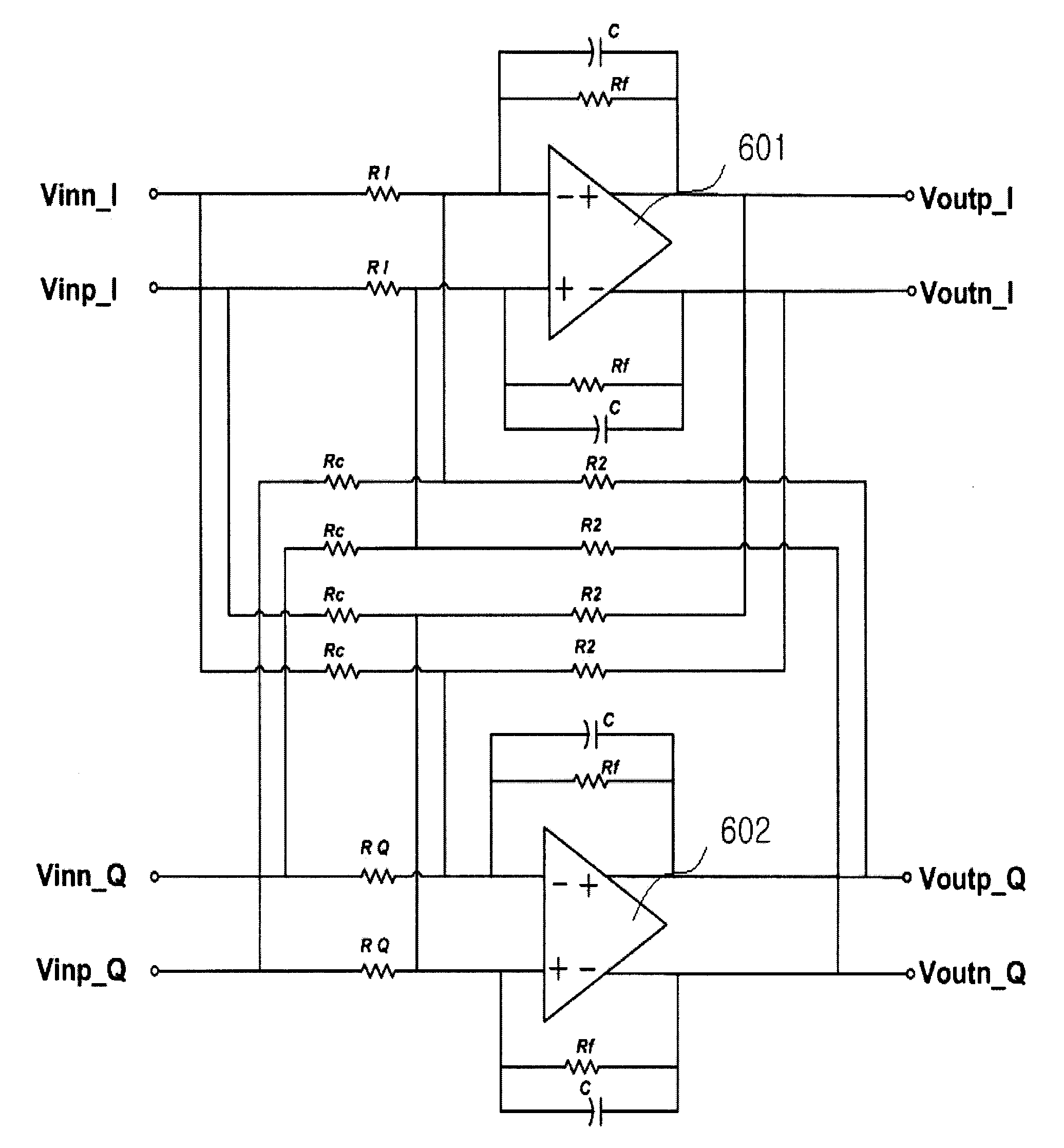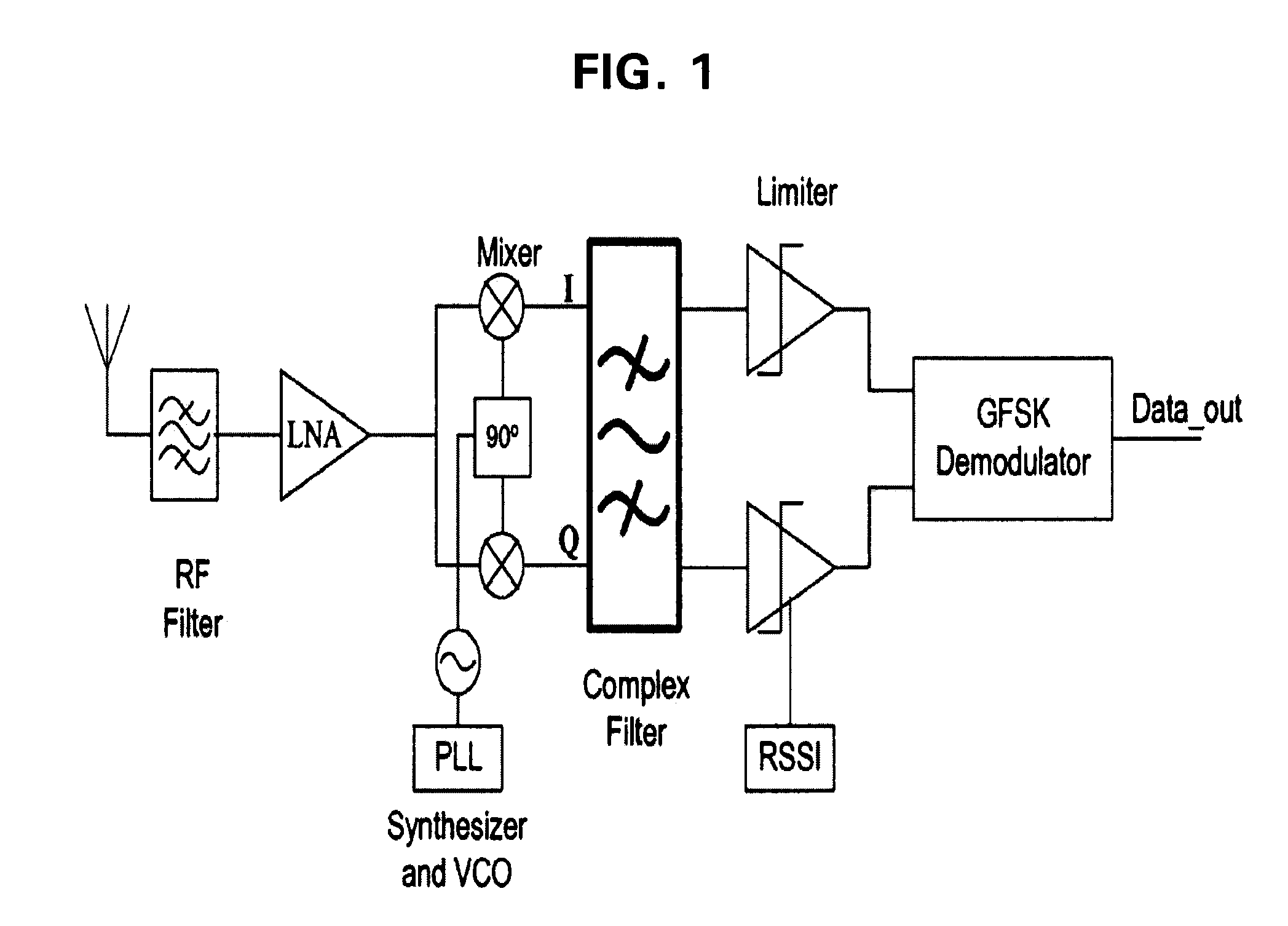Phase mismatch compensation device
a phase difference and compensation device technology, applied in the direction of different amplifiers, amplifiers with semiconductor devices/discharge tubes, low noise amplifiers, etc., can solve the problems of difficult phase difference compensation, slow processing speed, and not exactly 90 degree phase difference between i-channel and q-channel signals
- Summary
- Abstract
- Description
- Claims
- Application Information
AI Technical Summary
Benefits of technology
Problems solved by technology
Method used
Image
Examples
Embodiment Construction
[0020]Reference will now be made in detail embodiments of the invention examples of which are illustrated in the accompanying drawings.
[0021]FIG. 2 is a block diagram of a phase mismatch compensation device applied to a complex bandpass filter according to an embodiment of the present invention. Referring to FIG. 2, the phase mismatch compensation device 100 according to the embodiment of the present invention filters in-phase channel (I-channel) and quadrature-phase channel (Q-channel) analog input signals and then outputs I-channel and Q-channel output signals. Here, phase mismatch compensation device 100 comprises an I-channel phase conversion unit 101 converting the phase of an I-channel output signal using I-channel and Q-channel analog input signals; a Q-channel phase conversion unit 102 converting the phase of a Q-channel output signal using I-channel and Q-channel analog input signals; and a complex filter unit 103 performing filtering. In FIG. 2, a signal is processed by th...
PUM
 Login to View More
Login to View More Abstract
Description
Claims
Application Information
 Login to View More
Login to View More - R&D
- Intellectual Property
- Life Sciences
- Materials
- Tech Scout
- Unparalleled Data Quality
- Higher Quality Content
- 60% Fewer Hallucinations
Browse by: Latest US Patents, China's latest patents, Technical Efficacy Thesaurus, Application Domain, Technology Topic, Popular Technical Reports.
© 2025 PatSnap. All rights reserved.Legal|Privacy policy|Modern Slavery Act Transparency Statement|Sitemap|About US| Contact US: help@patsnap.com



